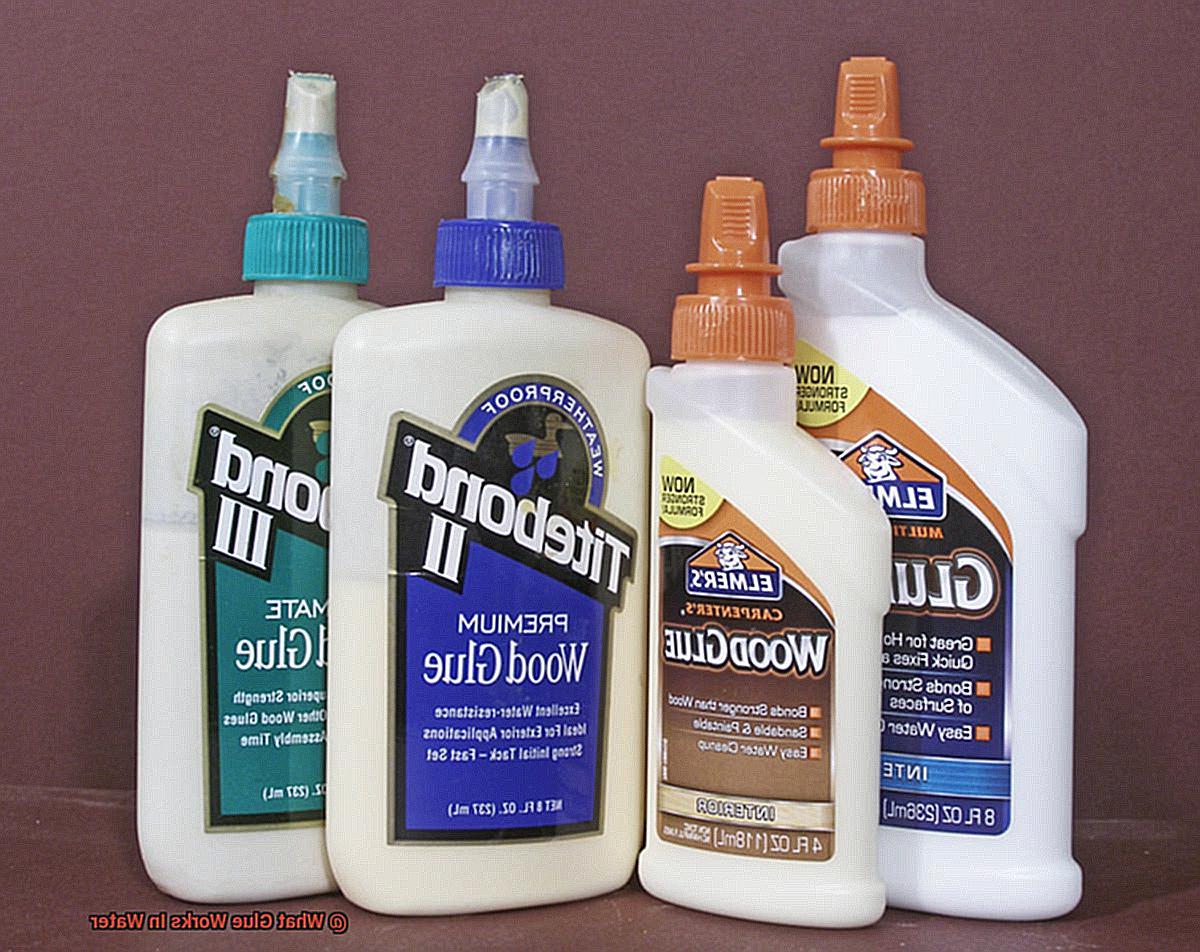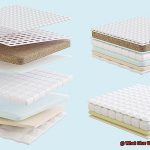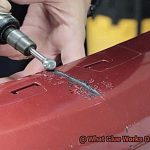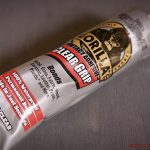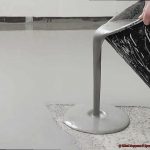Do you ever find yourself struggling to fix something in a wet environment? Maybe you need to repair your favorite pool float or beach ball, but every time it touches water, the glue falls apart. Or perhaps you live in an area with heavy rain and humidity, and you need a glue that can withstand those conditions. Whatever your situation may be, understanding what glue works in water is essential.
Finding the right adhesive that can bond materials in damp and humid environments can be quite a challenge. Most regular glues lose their effectiveness once they come into contact with water. However, there are several types of adhesives specifically designed to handle water exposure, making them perfect for use in aquatic settings.
From epoxy to cyanoacrylate and polyurethane, various types of water-resistant adhesives are available for different applications and surfaces. Some work best on wood, plastic, and metal while others are ideal for fabrics, ceramics, or even underwater surfaces. Knowing which glue works best for your specific project can not only help you repair your items but also extend their lifespan.
In our comprehensive guide on what glue works in water, we’ll explore the strengths and weaknesses of different types of adhesives as well as tips on how to choose the right one for your needs. So sit back with a cup of coffee (or tea.) and let’s dive into the world of waterproof glues.
Types of Glues: Water-Resistant vs. Waterproof
Contents
- 1 Types of Glues: Water-Resistant vs. Waterproof
- 2 Advantages of Using a Water-Resistant Glue
- 3 Advantages of Using a Waterproof Glue
- 4 Epoxy: The Best Option for a Waterproof Glue
- 5 Polyurethane Adhesive: Another Option for a Glue That Works in Water
- 6 Considerations Before Choosing a Glue for Your Project
- 7 Common Mistakes to Avoid When Using Glues in Water
- 8 Tips and Tricks to Get the Most Out of Your Glue Application
- 9 Conclusion
When it comes to glues, there are two main types that can withstand water: water-resistant and waterproof. While the terms may seem interchangeable, they have significant differences in their ability to maintain adhesive strength when exposed to water.
Water-resistant glues are designed to hold up in damp or humid environments, but they are not meant to be submerged in water for extended periods of time. These types of glues are great for projects that may have occasional exposure to water, like outdoor furniture or bathroom tiles. PVA glue and cyanoacrylate (super glue) are two common examples of water-resistant glues that can maintain their strength even in high humidity levels.
On the other hand, waterproof glues are specifically formulated to create a strong bond even when exposed to water. These types of glues are commonly used in marine applications, like boat building and repair, as well as outdoor construction projects like decks and fences. Epoxy is a popular type of waterproof glue that creates a strong bond when mixed together. Polyurethane glue is also a great option for outdoor projects due to its weather-resistant properties.
It’s important to note that even with waterproof glues, factors like temperature, pressure, and the type of material being bonded can all affect the strength of the bond over time. It’s crucial to read the manufacturer’s recommendations and consider the specific application and conditions it will be used in.
When choosing a glue for a project that may be exposed to water, it’s important to consider the level of exposure and the type of surface being bonded. Water-resistant glue is suitable for occasional exposure to water, while waterproof glue is designed to withstand constant exposure. It’s also essential to choose a glue that is appropriate for your project’s specific needs.
In conclusion, not all glues are created equal when it comes to water resistance. Choosing the right type of glue can make all the difference in ensuring your project stays strong and durable even when exposed to water.
Advantages of Using a Water-Resistant Glue
If you’re tired of watching your DIY projects fall apart due to exposure to water and moisture, look no further than water-resistant glue. This type of glue is a game-changer, offering a myriad of benefits that traditional glues simply cannot match.
One of the primary advantages of using water-resistant glue is its incredible durability. Unlike other adhesives, water-resistant glue can withstand exposure to water and moisture without losing any of its strength. This feature makes it an ideal choice for applications where strength and durability are essential.
In addition to its durability, water-resistant glue is also highly versatile. It can be used on a wide variety of surfaces, including wood, metal, plastic, and more. This versatility makes it an excellent option for a broad range of projects.
Water-resistant glue is weather-resistant as well. It can withstand extreme temperatures, making it an excellent choice for outdoor projects that will be exposed to the elements. Whether you’re fixing a fence or building a birdhouse, water-resistant glue will ensure that your project holds up against Mother Nature’s wrath.
Using water-resistant glue can also help reduce the need for maintenance and repairs over time. Because it’s specifically designed to resist water and moisture, it can help keep your project intact for longer periods of time, saving you both time and money in the long run.
Advantages of Using a Waterproof Glue
Look no further than waterproof glue. As an expert, I am thrilled to share the multitude of benefits that come with using a waterproof glue for your next project.
Firstly, waterproof glue is specifically designed to resist water, making it perfect for use in damp or wet conditions. It can withstand prolonged exposure to water without losing its adhesive properties. With waterproof glue, you can confidently tackle projects in underwater environments.
Secondly, waterproof glue forms a strong and durable bond that can endure the rigors of water exposure. It is capable of bonding different materials like wood, metal, plastic, and rubber. This ensures that your project will have a solid foundation and won’t succumb to water damage.
Thirdly, waterproof glue is versatile and can be used for a wide variety of applications. Whether you are repairing boats, pool equipment, aquariums or other items that require a strong and durable bond in wet conditions, waterproof glue is an essential tool for any DIY enthusiast.
Fourthly, a waterproof glue bond is long-lasting and can withstand exposure to water and other elements for extended periods. This makes it an excellent choice for outdoor projects such as decking, fencing, and outdoor furniture. By using waterproof glue, you won’t have to worry about constantly repairing or replacing your outdoor creations.
Lastly, many waterproof glues come in easy-to-use formats such as tubes or bottles with applicator tips that make them easy to apply precisely. You don’t have to worry about messy applications or uneven coverage.
Epoxy: The Best Option for a Waterproof Glue
Epoxy is the ultimate solution for a waterproof glue.
Epoxy is a two-part adhesive consisting of a resin and a hardener. When mixed together, they create an incredibly strong and durable bond that can withstand water, heat, and chemicals. But what makes epoxy the best option for a waterproof glue?
Firstly, epoxy cures through a chemical reaction rather than drying. This unique property ensures that the bond it creates is not affected by water or moisture. Say goodbye to worrying about your project falling apart after being exposed to water.
In addition to its water-resistant properties, epoxy also boasts a low shrinkage rate. This means that the bond remains intact even when exposed to water or humidity, preventing any water from seeping into your project.
Epoxy can be used on a variety of surfaces such as metal, wood, plastic, and concrete. It can even be used to fill gaps and cracks in surfaces, creating a tight seal that prevents water from entering.
Epoxy comes in various formulas and strengths to suit different applications. For example, marine-grade epoxies are specifically designed for use in marine environments and are resistant to saltwater and UV light. Fast-curing epoxies are ideal for quick repairs as they can set in as little as five minutes.
Polyurethane Adhesive: Another Option for a Glue That Works in Water
Polyurethane adhesive is the answer to your woes. This versatile glue bonds metal, wood, plastic, and concrete with ease, making it perfect for a variety of projects.
Polyurethane adhesive is gaining popularity due to its ability to work in wet or humid environments. Unlike traditional adhesives that rely on drying to form a bond, this adhesive reacts with moisture in the air or water to create a strong and durable bond. Whether you’re building a boat or repairing a leaky pipe, polyurethane adhesive will keep everything together even when submerged in water.
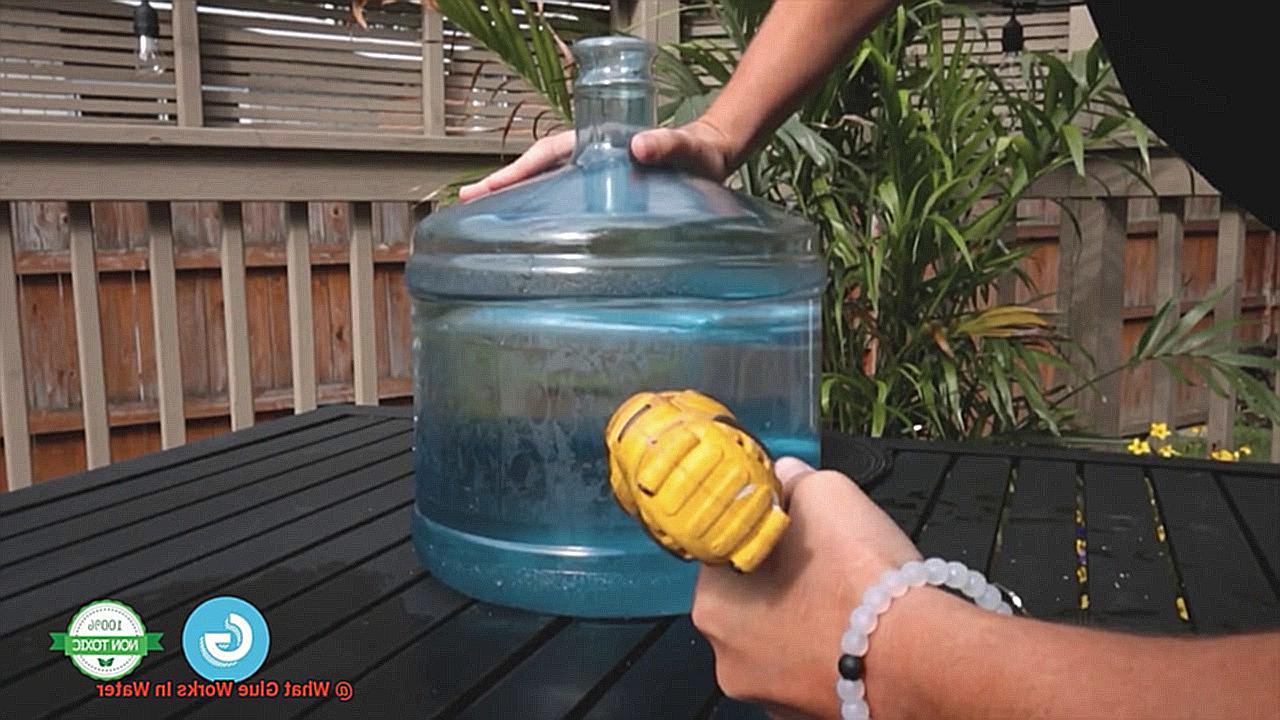
This adhesive has several other benefits, including its resistance to water and chemicals. It is an excellent choice for use in harsh environments where other adhesives might fail. Additionally, its ability to withstand high levels of stress and strain without losing bonding strength ensures that your projects stay intact for the long haul.
Polyurethane adhesive comes in different forms, including one-part and two-part formulas. One-part formulas are easy to use and require no mixing, while two-part formulas require mixing before application. Both options provide a strong bond, but two-part formulas are stronger and better suited for heavy-duty applications.
Considerations Before Choosing a Glue for Your Project
Selecting the perfect glue for your project can be a challenging task, particularly when working with materials that are exposed to water. However, as an expert in this field, I can offer some vital insights into the considerations you should keep in mind when choosing a glue for your project.
Firstly, it is critical to consider the type of materials you will be bonding together. It’s vital to choose an adhesive that is specifically designed for the materials you’re using, as not all adhesives work well with every material. For instance, wood glue might work well for wooden surfaces, but it may not be the best choice for bonding plastic or metal.
Secondly, you should take into account the environment in which the adhesive will be used. If your project will be exposed to water or other liquids, then you need a waterproof glue that can withstand moisture without losing its bonding properties. Polyurethane adhesive is an excellent choice for such situations as it can bond metal, wood, plastic and concrete with ease and can also withstand wet and humid environments.
The strength of the bond is another critical factor to consider. Some glues are designed for temporary bonds or light-duty applications, while others create stronger and more permanent bonds. For example, if you’re repairing a broken vase or figurine, a temporary bond may suffice. However, if you’re constructing something heavy-duty like a boat or a piece of furniture, then you’ll need a stronger adhesive that can handle the weight and stress.
Lastly, safety concerns should also be taken into account when selecting a glue product. Certain glues contain harmful chemicals or emit strong fumes that are harmful to both people and the environment. It’s imperative to choose non-toxic and low-odor adhesives that are safe for your surroundings and follow all manufacturer-provided safety instructions.
Common Mistakes to Avoid When Using Glues in Water
If you’re working on a project that involves water exposure and you’re using glue, there are some common mistakes you should avoid to ensure a successful and long-lasting outcome. As an expert in this field, I can guide you through these potential pitfalls so you can avoid them altogether.
Choosing the right type of glue is crucial when working with water. Not all glues are created equal, and not all of them are designed to work in water. Using the wrong type can lead to a failed project. So, make sure to do your research and choose the right glue for the job.
One mistake that people often make is not properly preparing the surface before applying the glue. Any dirt, debris, or moisture on the surface can prevent the glue from adhering properly. So, take the time to clean and dry the surface thoroughly before applying any glue.
The amount of glue applied is important as well. Applying too little can result in weak bonds that will eventually break apart. On the other hand, applying too much can cause the surfaces to slip and slide, preventing a proper bond from forming. So, apply just enough glue to create a strong bond without overdoing it.
Allowing sufficient time for the glue to dry and cure is one of the most important things to keep in mind when using glues in water. Rushing through this process can result in a weak bond that will eventually fail. So, follow the instructions carefully and give it enough time to dry and cure before exposing it to water.
To summarize:
- Choose the right type of glue for water projects
- Properly prepare the surface before applying glue
- Apply just enough (but not too much) glue for a strong bond
- Allow sufficient time for glue to dry and cure
Tips and Tricks to Get the Most Out of Your Glue Application
When it comes to applying glue in wet or submerged conditions, there are certain factors to consider to ensure a strong and long-lasting bond. Here are five sub-sections that will guide you through selecting the right type of glue for your application and preparing your surface correctly.
Choosing the Right Glue
Not all glues are created equal, and choosing the right one is essential for a successful application. For projects that require waterproofing, marine-grade adhesives are the best option, as they are specially designed to withstand exposure to water and moisture. These adhesives often contain unique ingredients like polyurethane or epoxy, which create a strong bond even when submerged.
Surface Preparation
Before applying the glue, ensure that the surface is clean and dry. The presence of any dirt or moisture can weaken the bond and lead to failure. To create a better grip for the adhesive, use sandpaper or a wire brush to roughen up the surface slightly.
Following Manufacturer’s Instructions
Different types of glue require specific application methods, and it is important to follow the manufacturer’s instructions carefully. This includes using a specific applicator or brush, applying the glue in a certain pattern or amount, and allowing sufficient drying time before exposing the bond to water.
Considering Water Type
It is important to consider the type of water that your project will be exposed to, as certain types of water may affect the adhesive’s strength over time. For example, saltwater can be corrosive, while very cold water can cause adhesives to become brittle.
Using the Right Amount of Glue
Applying too little glue may result in a weak bond, while using too much can lead to a messy application and longer drying times. A good rule of thumb is to apply enough glue to cover the surface evenly without leaving any gaps.
Allowing sufficient drying time before handling or using the glued item is also important. Drying time can vary depending on the type of glue used, so it’s crucial to follow the manufacturer’s instructions carefully.
-bwjyPhEACk” >
Also Read: Is Super Glue Waterproof? – Glue Things
Conclusion
As we wrap up our discussion on what glue works in water, it’s clear that selecting the right adhesive can make or break a project. Whether you’re working on a boat, pool, or any other water-based application, it’s crucial to choose a glue that can withstand exposure to moisture.
While there are many options available, water-resistant and waterproof glues are the most common choices. Water-resistant glues can handle damp or humid conditions but aren’t meant for long-term submersion. On the other hand, waterproof glues are designed to create a strong bond even when exposed to water and are perfect for marine applications and outdoor construction projects.
If you’re looking for an incredibly durable and robust option, epoxy is an excellent choice for waterproof glue. It can hold up against heat, chemicals, and of course, water. Polyurethane adhesive is another versatile option that bonds metal, wood, plastic, and concrete with ease while also performing well in wet or humid environments.
To ensure your glue application is successful, be sure to follow these tips: select the right type of glue for your project; prepare surfaces correctly by cleaning and drying them thoroughly; follow manufacturer instructions carefully; consider the type of water your project will be exposed to; apply an even amount of glue without any gaps; allow sufficient time for drying before handling or using the glued item.

